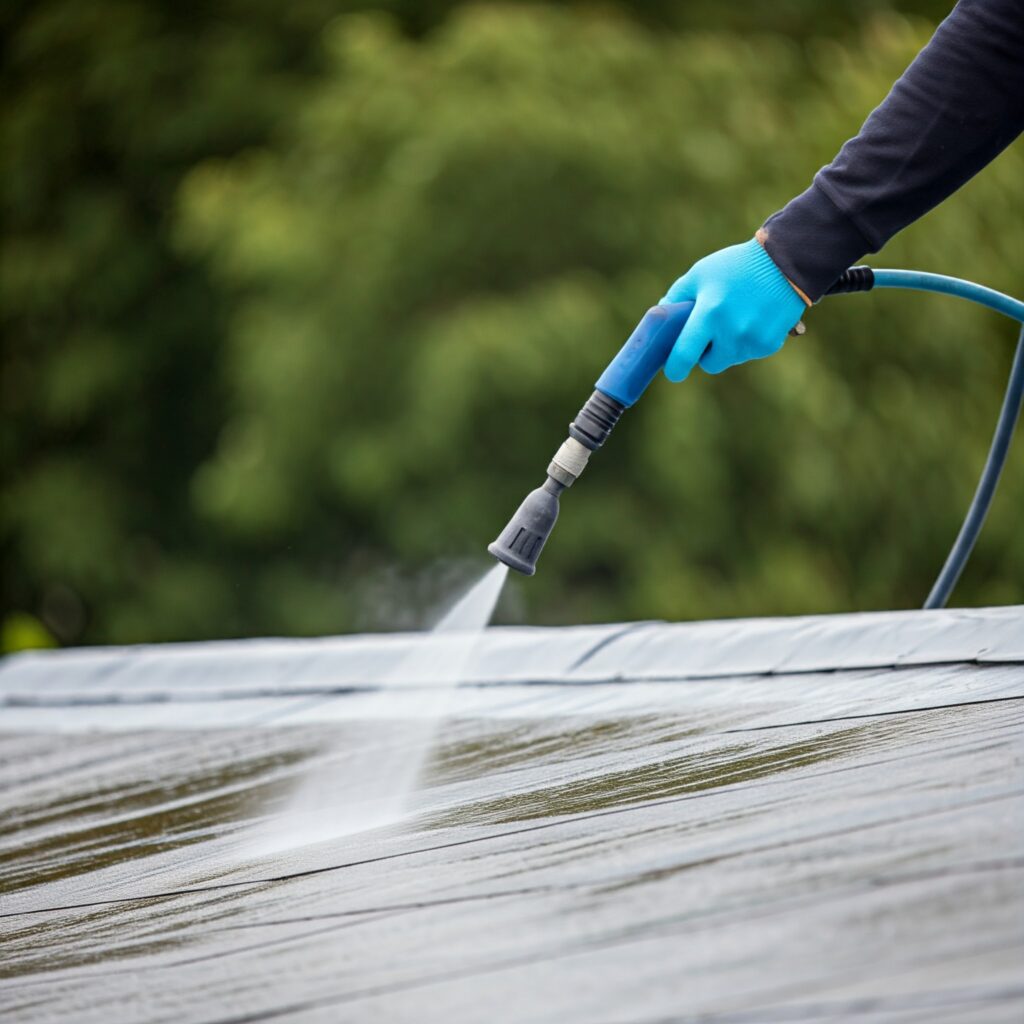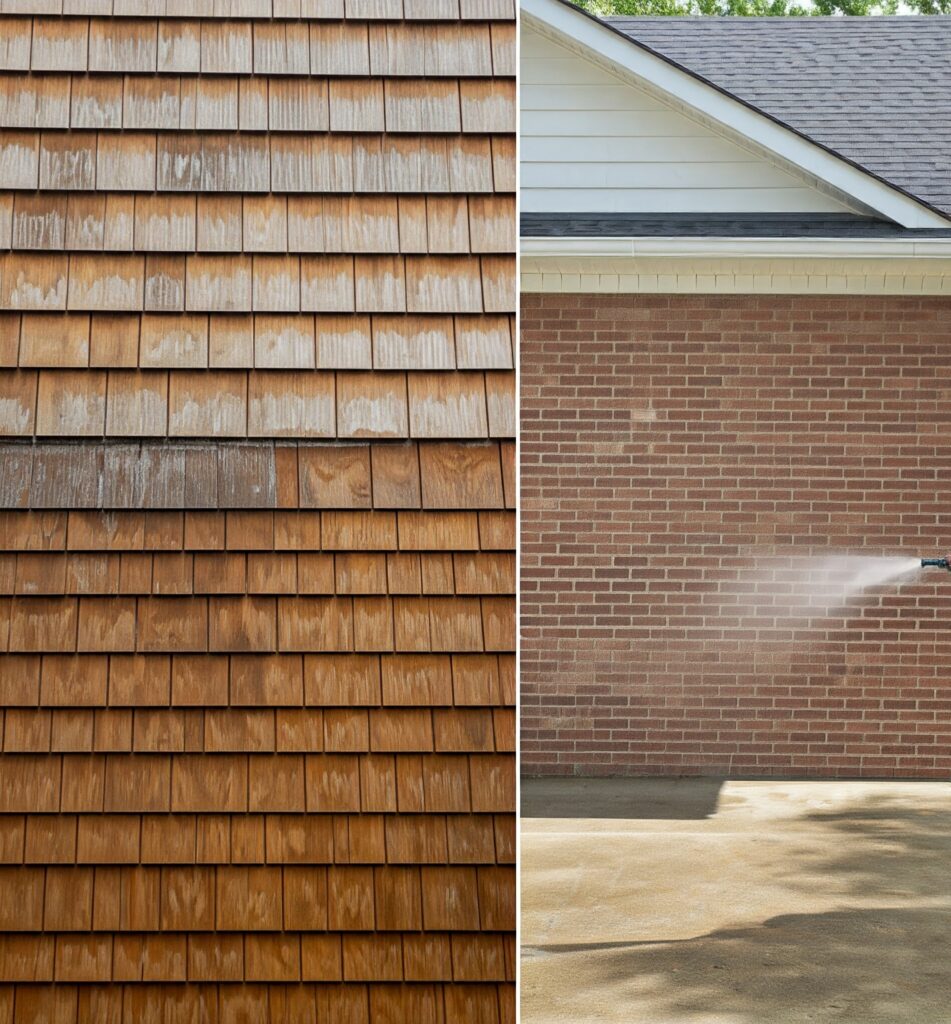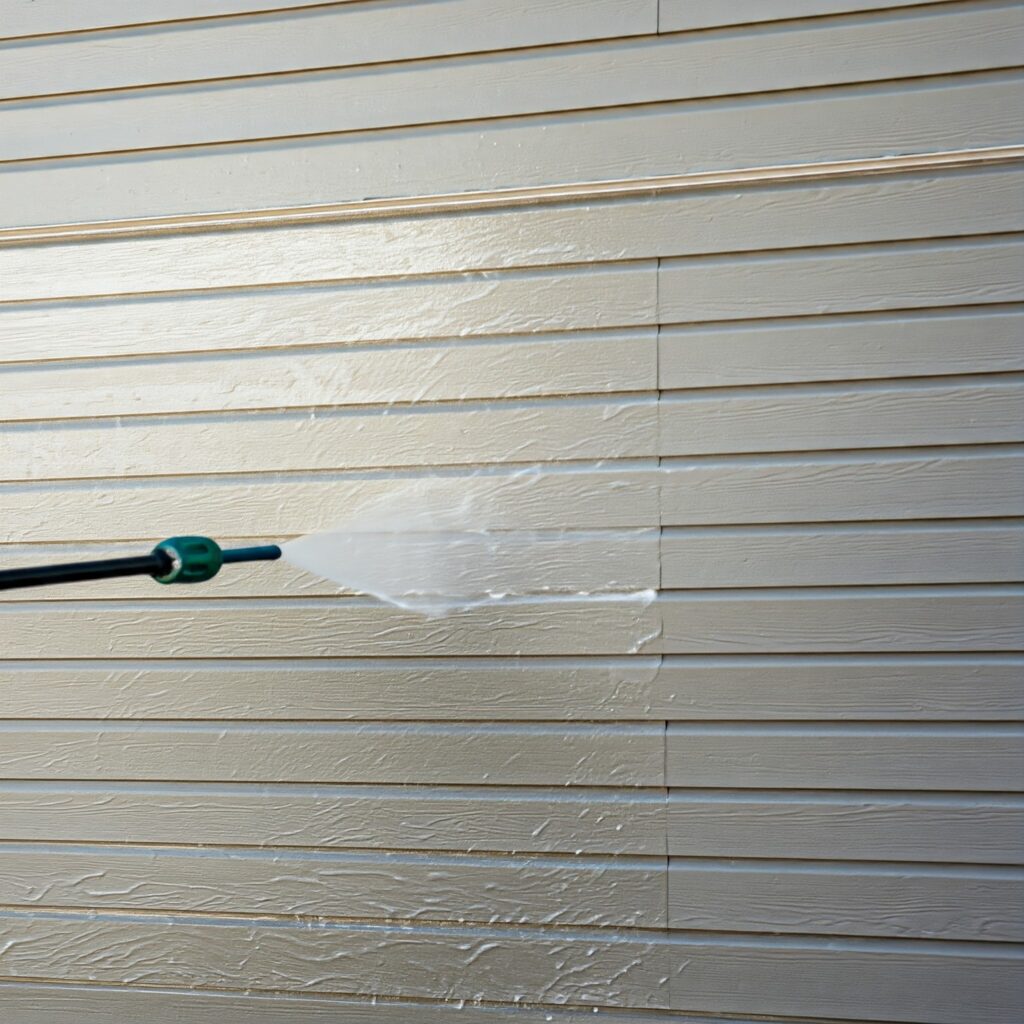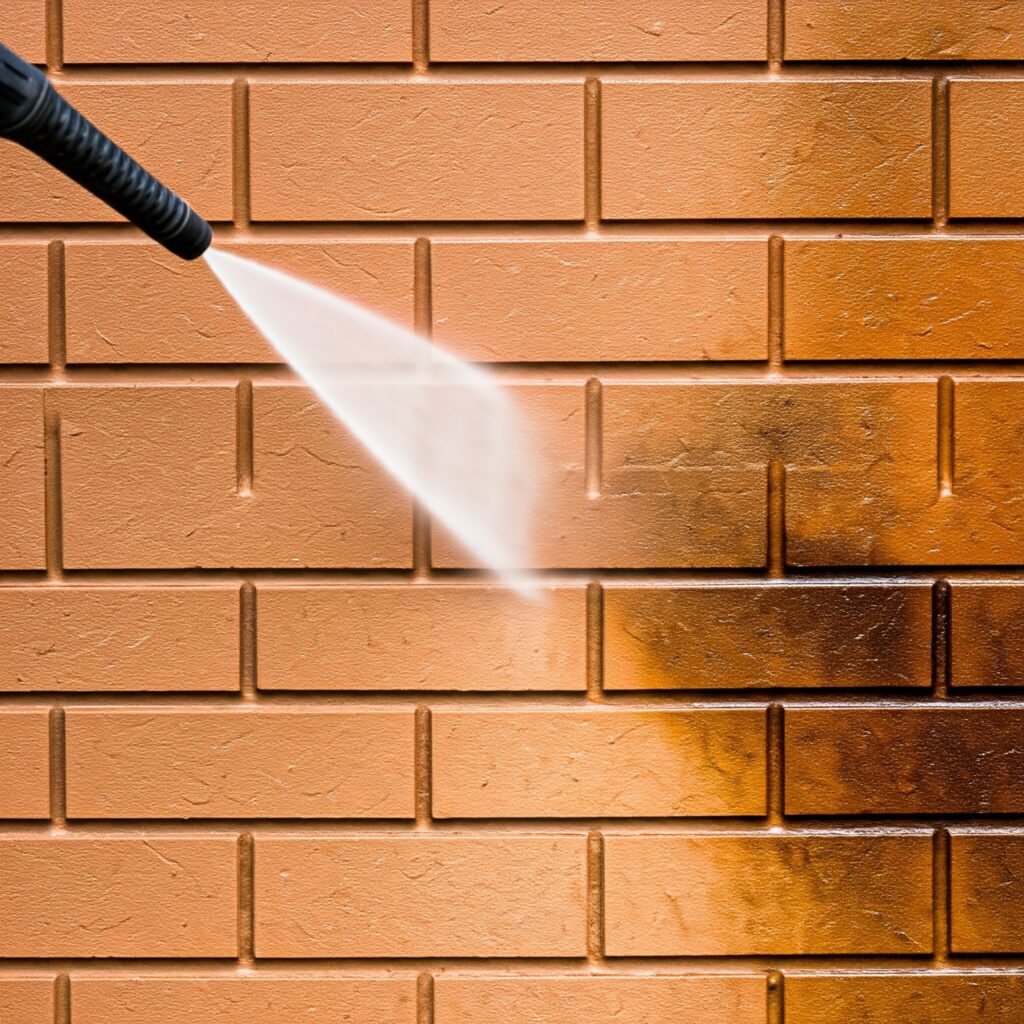When it comes to exterior cleaning, both soft washing and pressure washing are effective methods. However, they differ significantly in their approach and best uses. In this post, we’ll explain the differences between the two, when to use each, and how to choose the right method for your specific cleaning needs.
What is Soft Washing?

Soft washing is a cleaning method that uses low-pressure water combined with a special blend of cleaning solutions to safely clean surfaces. It is typically used for more delicate surfaces, such as roofs, siding, and windows, as it avoids the risk of damage caused by high-pressure water.
What is Pressure Washing?

Pressure washing uses high-pressure water to blast away dirt, grime, mold, and other contaminants from hard surfaces. It’s ideal for tougher surfaces like concrete driveways, brick walls, and decks. However, pressure washing can be too harsh for certain materials, making soft washing the better option in some cases.
Key Differences Between Soft Washing and Pressure Washing

- Pressure Level: Soft washing uses low pressure, while pressure washing uses high pressure.
- Cleaning Solutions: Soft washing relies more on cleaning solutions, whereas pressure washing primarily uses water power.
- Surfaces: Soft washing is ideal for delicate surfaces like siding and roofs, while pressure washing is best for hard surfaces like concrete and brick.
When to Use Soft Washing

Soft washing should be used when cleaning:
- Roofs (especially asphalt shingles)
- Siding (such as vinyl, wood, or stucco)
- Windows
- Fences
Soft washing is ideal for these materials because they can be damaged by the high pressure of pressure washing. The cleaning solutions used in soft washing break down dirt and organic matter like algae and mold without harming the surface.
When to Use Pressure Washing

Pressure washing is more suitable for:
- Driveways
- Sidewalks
- Brick walls
- Patios
These surfaces can withstand the high pressure, and the water force helps to remove tough stains, grime, and mold quickly and effectively.
Pros and Cons of Soft Washing and Pressure Washing
Soft Washing Pros: Safer for delicate surfaces, longer-lasting results, eco-friendly cleaning solutions.
Soft Washing Cons: May require more time for stubborn stains.
Pressure Washing Pros: Extremely effective for tough surfaces and stains, faster results.
Pressure Washing Cons: Can damage delicate surfaces, requires more water.
How to Choose Between Soft Washing and Pressure Washing
When deciding between soft washing and pressure washing, consider the surface you need to clean, the level of dirt and grime, and whether the surface is delicate or tough. If you’re unsure, it’s always best to consult a professional who can assess your specific needs and recommend the best approach.
Conclusion
Both soft washing and pressure washing have their benefits and specific use cases. For delicate surfaces, soft washing is the way to go, while pressure washing is perfect for tougher materials like concrete and brick. By choosing the right method, you can ensure your home looks its best without causing any damage.
